Last updated on June 9th, 2021 at 07:52 am
The 12 best high fiber foods that you should eat after a tough training session.
I love the “f word”. Fiber, that is! When asked about healthy foods, I almost always recommend foods that have plenty of fiber.
After all, fiber is the nutrient that helps keep you regular, and it’s associated with lowering cholesterol and reducing the risk of heart disease. Not to mention that fiber is found in the healthiest of foods, like fruits, vegetables, beans, legumes and whole grains.
But there is one slight problem–fiber can cause gas, especially in athletes that have to deal with stomach issues on the regular. [Read more about common GI complaints from runners and how to fix them in The No-Brainer Nutrition Guide For Every Runner.]
That doesn’t mean you should avoid fiber, but it does mean you may have to steer clear of some of these foods before exercise. As they say, knowledge is power, so arm yourself with some info about fiber in order to fuel the right way.
What is fiber?
Fiber is the stuff that makes you go to the bathroom, right? Well yes, but in even simpler terms, fiber is a carbohydrate that the body cannot digest. Whereas most carbohydrates are broken down into sugar molecules, fiber passes through the body undigested. As it does so, it takes bile acids with it, which decreases blood cholesterol.

It also takes the body a while to digest fiber, which helps keep you full and plays a role in regulating hunger. Fiber adds bulk to the stool and contributes to digestive regularity.
But that’s not all– fiber has been linked to a reduction in many serious diseases. The Academy of Nutrition and Dietetics states that “higher intakes of dietary fiber reduces the risk of developing several chronic diseases, including cardiovascular disease, type 2 diabetes, and some cancers, and have been associated with lower body weights.”
How much fiber should you eat?
Only 1 in 10 American adults eat enough veggies everyday, so most people don’t get enough fiber. The daily fiber recommendations are:
- 25 grams for women
- 38 grams for men
Although that may seem like a lot, you can easily get plenty of fiber in your diet from eating a mix of fruits, vegetables, legumes, beans and whole grains. These are the best sources of fiber, as you will see from the list below.
What’s the difference between soluble and insoluble fiber?
There are two main categories of fiber– soluble and insoluble. Almost all plant foods contain a mixture of these two types of fiber, but some are higher in one type. Let’s break these down:
Soluble fiber is the main type of fiber found in grains, legumes, seeds, and some fruits and vegetables. It’s dissolved in water and helps slow the rate at which carbs enter the blood stream. That means it regulates blood sugar and contributes to feelings of fullness.
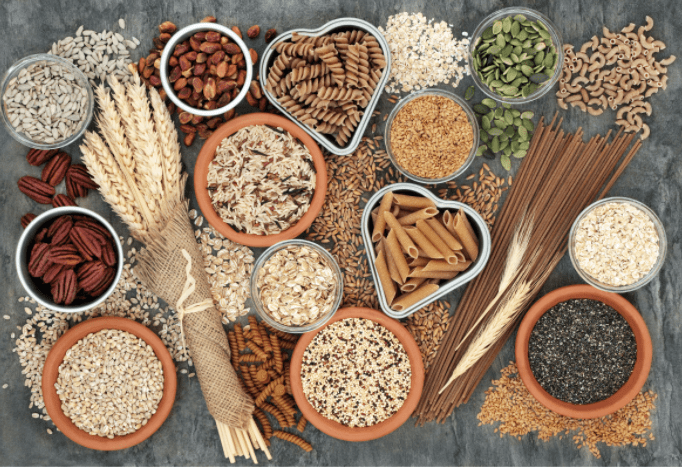
Insoluble fiber is not dissolvable, and it passes right through the body. In other words, insoluble fiber is the kind that helps you poop, treats constipation and adds bulk to the stool.
You want to get a mixture of soluble and insoluble fiber in your diet. Once again, the best way to do so is eat plenty of plant-based whole foods.
Is fiber good for athletes?
Fiber affects everyone differently, and it can be beneficial and problematic for athletes. Certain endurance sports, like running or swimming, can cause stomach issues and eating high fiber foods contribute to this unrest. [Read How To Avoid Stomach Issues While Running.]

That said, there are a ton of fruits that have fiber and are great for athletes. The only way to know what foods may affect your stomach is through trial and error. If you’re not sure if the foods below are right for you, try them out during your training.
To learn more about how to time your meal for fueling, check out The No-Brainer Nutrition Guide For Every Runner.
What are the best high fiber foods?
These 12 foods are high in fiber and part of any healthy diet. If you’re an athlete, make sure you have these foods after a workout, so they don’t upset your stomach.
1.Peas: 1/2 cup = 4 grams fiber
Green starchy peas have plenty of healthy carbs and fiber. Not to mention that they are extremely affordable and can be left in the freezer for a few months.
Buy a bag of frozen peas and use them to whip up a simple soup or add to a stir fry.
2. Black Beans: ½ cup = 7grams fiber
For plant-based eaters, black beans add fiber, protein and iron to the diet. Some people may experience gas when eating black beans, so they might be a little too harsh on the stomach the night before a long run or other form of endurance exercise.
But the good thing about beans is that they have plenty of protein and fiber to satiate your hunger after a workout. If you’re looking for some bean inspiration, here are a few of my favorite recipes:
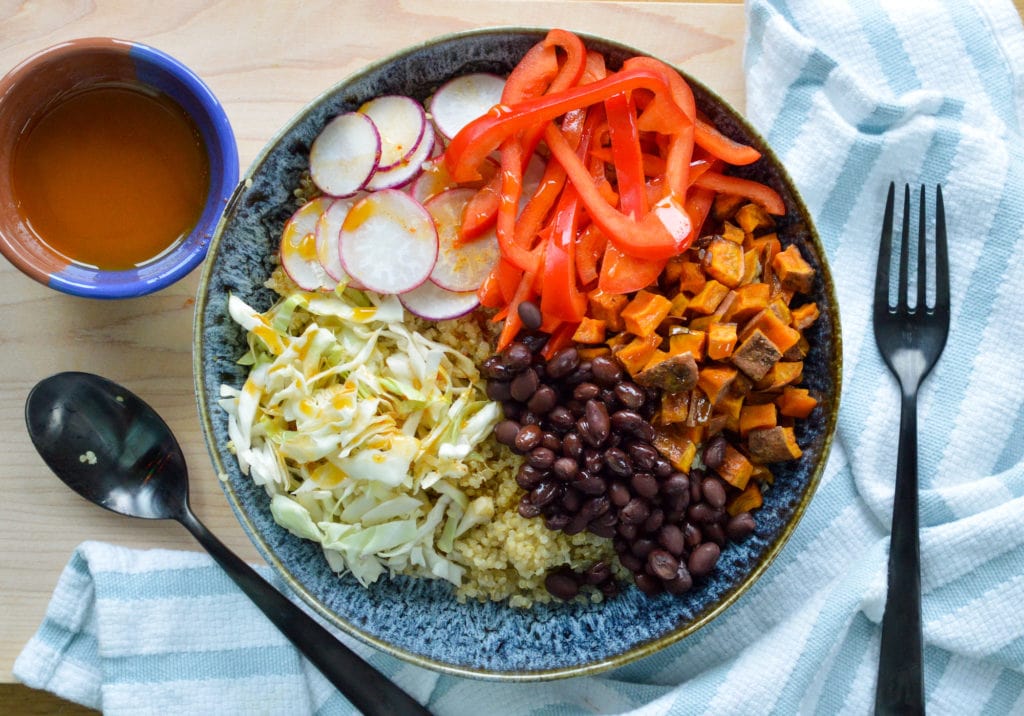
3. Beets: 1 cup = 3 grams fiber
These purple root veggies are packed full of nutrients, like antioxidants and fiber. And they are gorgeous, tasty and easy to roast up in the oven.
Beets have an earthy taste that goes well with fall dishes. Try adding them to colorful salad, like this Roasted Beet & Orange Quinoa Salad.
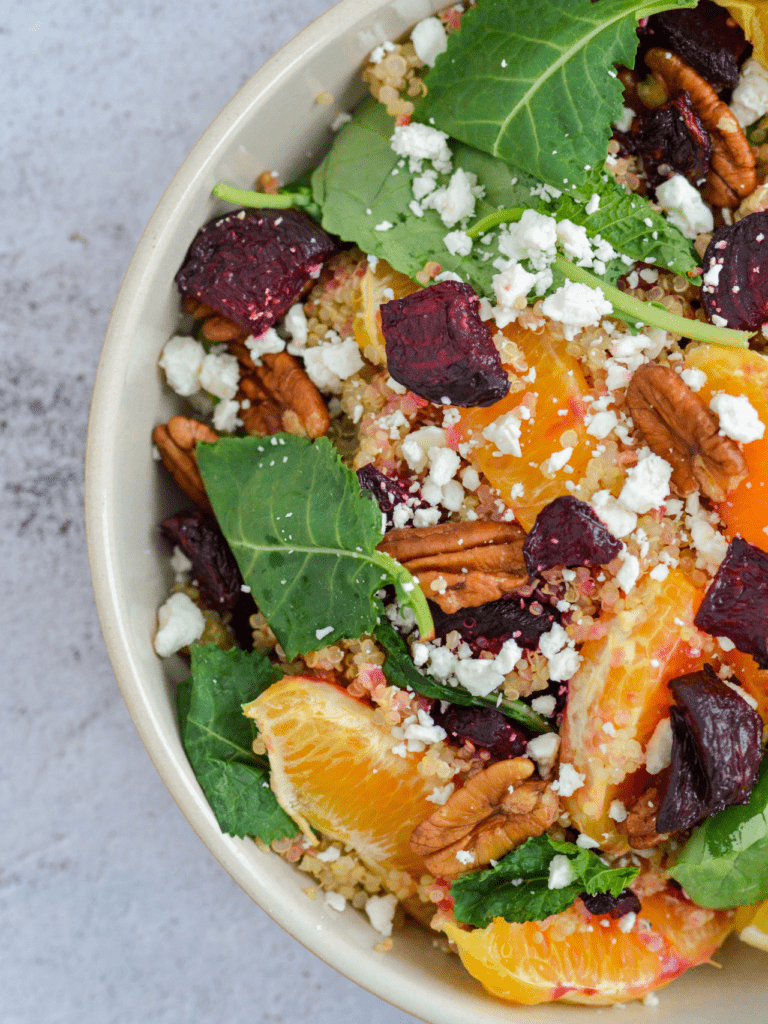
4. Cauliflower: 1 1/2 cup = 3 grams fiber
This trendy cruciferous veggie proves that white foods can be good for you! Cauliflower has been known to give some people gas, so be careful about eating it before a workout. Otherwise, dig into this Buffalo Cauliflower Rice Bowl and make a batch of these Cauliflower Poppers.
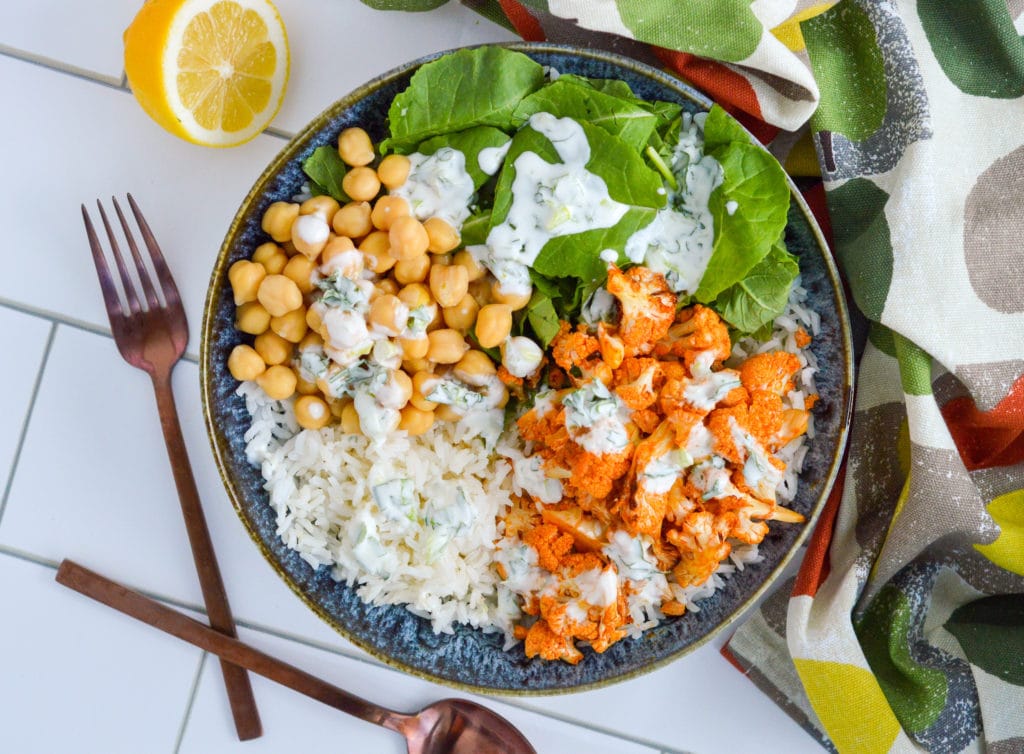
5. Brussels Sprouts: 1 1/2 cups = 5 grams fiber
This once hated tiny cabbage is now a fan favorite, and it’s loaded in fiber. Just 1 cup of Brussels sprouts has 100 percent of your daily Vitamin C, 4 grams of protein, and 16% of your daily fiber.
Brussels sprouts have a naturally bitter taste, so pair them with something mild, like bread and cheese. Whether you add them as a topping to a traditional pizza or make an untraditional recipe, like this Sweet Orange Glazed Brussels Sprout Flatbread, you’re going to love this new way to eat brussels.
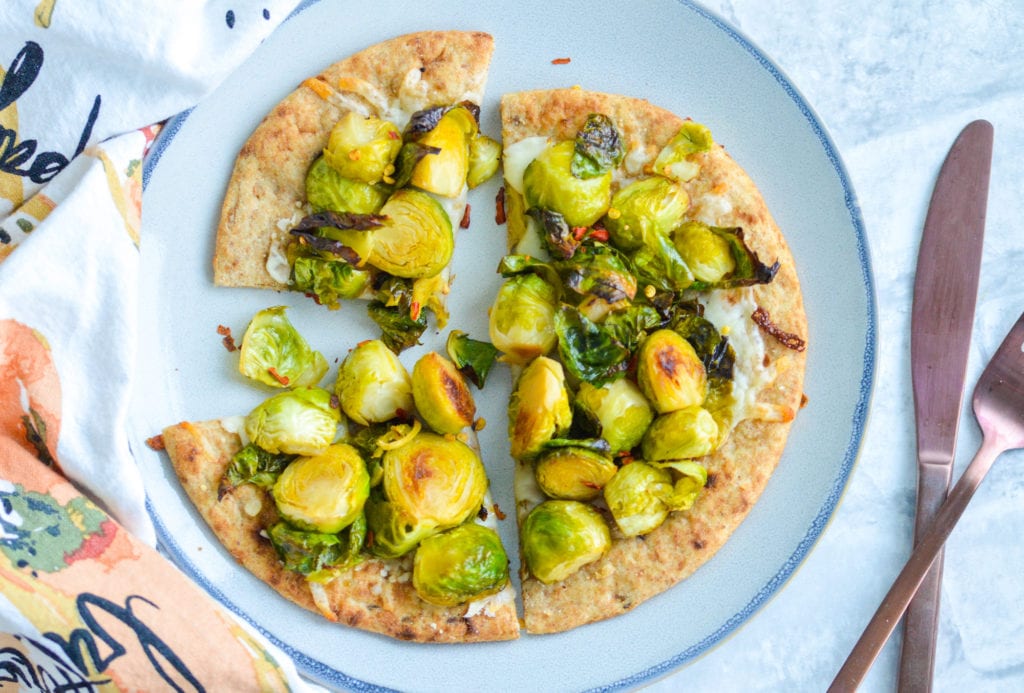
6. Pears (with skin): 1 medium = 10 grams fiber
The skin on this sweet fall fruit gives it a fiber boost. That means pears provide long lasting energy and won’t spike your blood sugar! Not to mention that they are succulently sweet topping for a bowl of oatmeal, and they even taste delicious in a crunchy salad.
But one of my absolute favorite ways to eat pears is in a simple pear and apple crisp. This recipe is completely vegan and has just a hint of sugar.
7. Prunes: 1 cup = 12 grams fiber
Prunes are the answer to your constipation woes. Whether you like dried prunes or prune juice, these tiny fruits are sure to help you go. That said, even though dried fruit is a great pre-workout snack, you probably want to stay away from them before exercise to avoid stomach issues.
As an added bonus, prunes are also high in potassium, an electrolyte that you lose in sweat. And they are a great source of non-dairy calcium.
8. Sweet Potatoes (with skin): 1 medium = 4 grams fiber
Make sure you keep the skin on your sweet potato because that’s where all the fiber is found. Sweet potatoes are an ideal pre-workout carb because they provide long lasting energy.

This orange tuber is also rich in potassium, Vitamin A and antioxidants, making it an all around good choice. Roast some up with other root veggies on a sheet pan for a simple weeknight dinner. Or use them as the base for a simple Sweet Potato & Kale Quesadilla.
9. Lentils: ½ cup cooked = 7.5 grams fiber
These legumes are a favorite in my kitchen because of their protein and fiber content. Lentils make a great replacement for meat in dishes like tacos, meatballs and burgers.
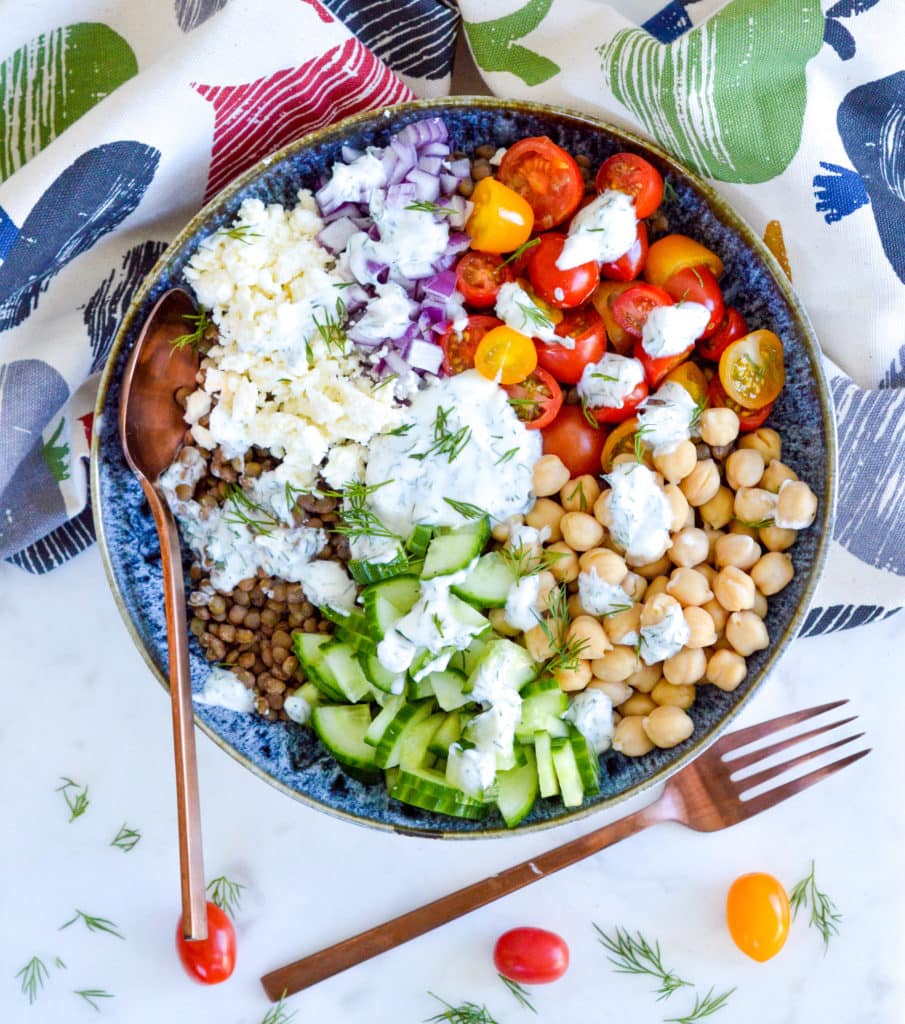
Lentils also have a ton of plant-based protein and iron, making them a healthy staple in a vegan or vegetarian diet. If you’re looking for new ways to use lentils, try one of these recipes:
- Greek Lentil Power Bowl
- Moroccan Lentil Soup
- Lentil Veggie “Meatballs”
- Zucchini & Lentil Tacos with Radish Salsa
10. Apples (with skin): 1 medium = 5 grams fiber
This juicy portable fruit has tons of fiber in the skin, so make sure you munch on the entire thing to reap all the benefits. A small apple is a great on-the-go pre-workout snack. It’s easy to carry and has about 100 calories– just enough to hold you over in between meals.
You can snack on an apple as is or use them in any of these recipes:
- Apple Protein Pancakes
- Frisée Salad with Apples & Goat Cheese and Maple Vinaigrette
- Slow Cooker Apple Butter
- Apple & Pear Crisp
11. Blueberries: 1 cup = 3.5 grams fiber
Whether you eat them frozen or fresh, blueberries are a good source of fiber. They also contain Vitamin C and K and manganese. Plus, there is a ton of research about the benefits of blueberries for the heart.
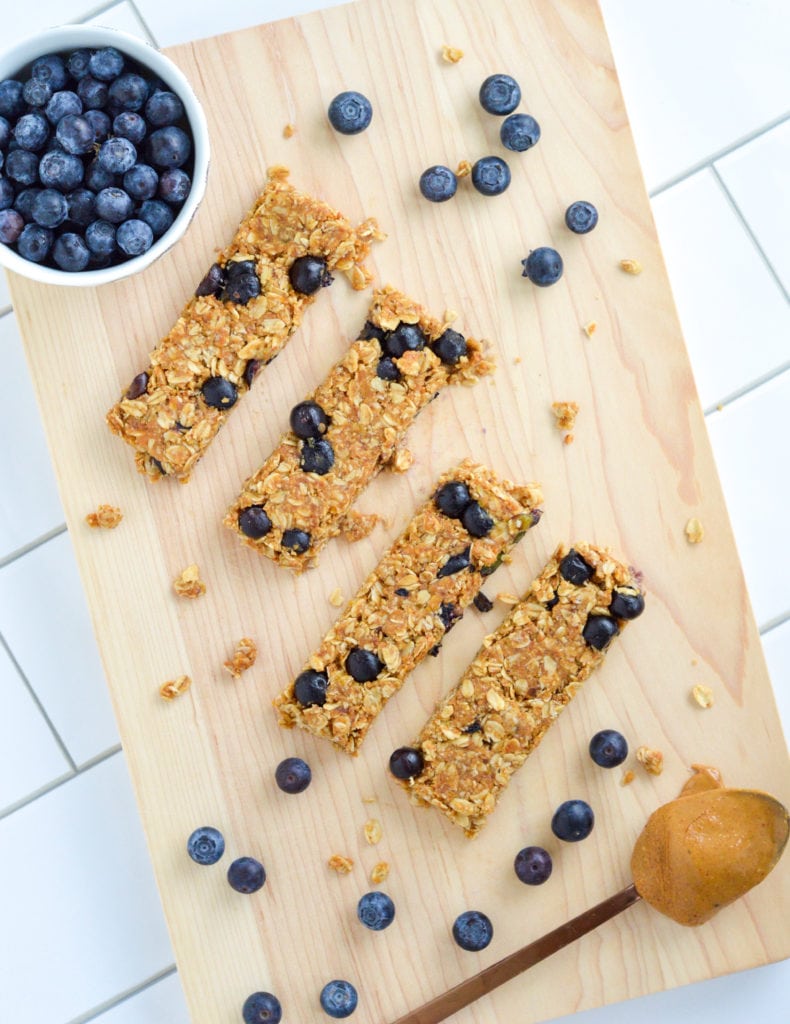
Eat this heart healthy berry with oatmeal, smoothies or salads or use them in any of these recipes:
- No Added Sugar Blueberry Pancakes
- No Bake Blueberry Granola Bars
- No Bake Frozen Blueberry Bars
- Blueberry Cheesecake Dip
- 3-Ingredient Blueberry Chia Jam
- Blueberry Maple Walnut Trail Mix
12. Oats: ½ cup dry = 4 grams fiber
It’s no secret that I love a good bowl of oats in the morning. It’s the fiber in them that keeps me full until lunchtime. As a matter of fact, oats have a special fiber called beta-glucan, which has been linked to reductions in blood cholesterol.
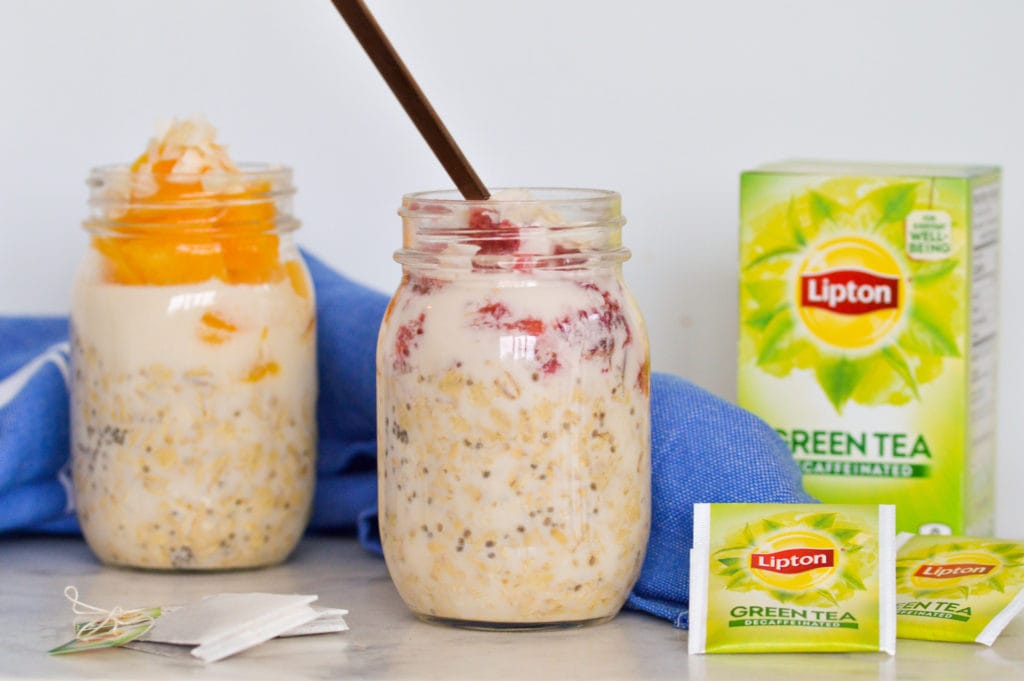
Not to mention that a 1/2 cup of oats has 5 grams of plant-based protein. They are also versatile, affordable and easy to use in recipes like:


High fiber foods are amazing and provide great immunity.